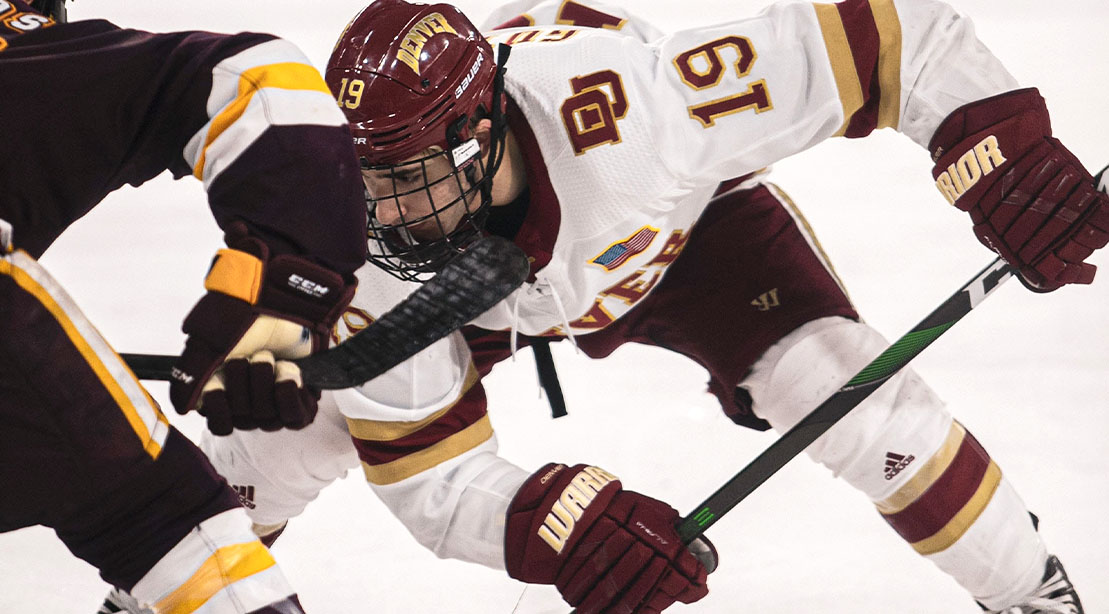
Remember when 2014 NHL draft prospect Sam Bennett made the news due to his inability to perform one chinup during the draft combine? Other than that weakness, The Florida Panthers center is quite exceptional at everything else.
The backstory behind the chin-up test is it was a last-minute addition to the combine, and some players didn’t prepare for it, with some being caught out. That being said, chin-ups and pull-ups are arguably the best tests of relative upper-body strength, and if you’re hoping to be a professional athlete, you should be able to bust out a few.
I’ve been able to do chin-ups since high school because I didn’t weigh much, but other bigger people struggle. However, it should be a goal for every gym-goer and athlete to be able to perform chin-ups because relative strength matters.
Here, we’ll get into what’s needed for chin-ups, their benefits, and why ice hockey players need to do them.
What Muscles Do Chinups Work?
There were reasons Sam Bennett wasn’t able to do one chinup besides being hard. Here are four muscle factors that are needed for chin-ups.
Thoracic Mobility: Extending your upper back spinal area allows you to strengthen your upper back and lats better. It’s not to say you cannot do chin-ups without thoracic mobility, but it is better with it.
Core Strength: Chin-ups are sneaky core exercises because your core kicks in to keep your lower body still and your lower back in neutral. The core allows your larger back muscles to do their job. Getting that chin above the bar will be a struggle if you lack core strength.
Relative Strength: This is what you can lift compared to your body weight. Good relative strength is essential to perform chin-ups.
Grip Strength: As you are hanging vertically with your entire body weight supported by your hands, if you cannot grip it, you cannot rip it.
Benefits of Performing Chin-Ups For Hockey Players
Besides looking like a badass, chin-ups build muscle and strength in the upper back, biceps, and lats and are the best test for relative upper-body strength. When you want a tapered back, chin-ups and pull-ups are the essential exercises to get there.
Improved Grip Strength
If you cannot grip the bar, your chinup chances go down the drain. Chin-ups train your supporting grip strength, and holding on for a time will improve your grip strength and endurance. Developing a firmer grip will improve your performance with all exercises and movements requiring grip strength, including holding a hockey stick.
Increased Upper Body Strength
Chin-ups and your ability to do them are the best measures of your relative strength. With the number of muscles it trains, and because you’re pulling your entire body weight (plus load if you are advanced), you will build huge amounts of relative strength with the chinup.
Hypertrophy
Chin-ups will add muscle to your forearms, biceps, upper back, and lats because of the incredible tension they need to perform a chinup. But one caveat: you’ll need multiple reps and go through a full range of motion to add muscle.
Why Hockey Players Need To Do Chin-ups
Most pulling exercises, including chin-ups, are great for ice hockey players to maintain good posture during battles on the ice, reduce injury risk, and put more power on the puck. This 2011 study concluded that two off-ice performance tests were the most highly correlated to on-ice performance, and one of them was the max chinup test.
But research doesn’t tell the whole story. Kevin Carr, CFSC, LMT, and partner at Mike Boyle Strength and Conditioning in Boston, MA, has trained his fair share of ice hockey players. Here, Kevin gives you the low down on why ice hockey players need to do chin-ups.
“The development of upper-body strength, specifically in the muscles surrounding the shoulder girdle, is significant for performance enhancement and injury reduction in sports. Vertical pulling exercises like chin-ups are extremely valuable for developing the lats, rhomboids, posterior shoulder, biceps, forearms, and hand musculature.
In collision sports like hockey, the value of muscle hypertrophy cannot be overstated to reduce impact-related injuries. The more mass you carry and the muscle you have in your body, the better you can both dish out and withstand impact from other players. The latissimus dorsi is the largest muscle in the upper body, and chin-ups are a fantastic tool for developing it and adding mass to your upper body.
Chin-ups will improve your upper body strength to improve shooting velocity and your hand and wrist strength, which is valuable for stick handling. Often overlooked as a grip exercise, the time spent hanging from the bar in a chinup is a great developer of the hand muscles and wrist flexors necessary for shooting and stick handling.” explains Carr.
Upper Body Workout For Hockey Players
Now you know chin-ups are the bomb; here is an upper body workout that ice hockey players or anybody else can perform to improve upper body strength and muscle.
1A. Chin-ups (or negative Chi-nups)
4 sets, 3-5 reps (2 minutes rest between sets)
2A. Dumbbell Or Barbell Floor Press
2B. Rope Face Pull
3A. Incline Dumbbell Bench Press
3B. Dumbbell Deadstop Row
4A Lateral Raises
4B. Side Plank
2 sets of five breaths on each side






